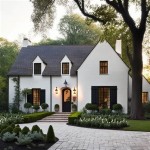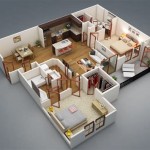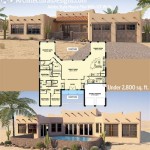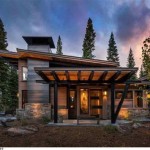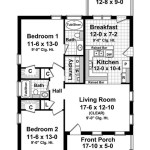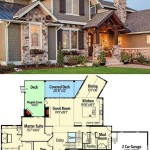L-Shaped Small House Plans: Maximizing Space and Functionality
L-shaped small house plans have gained significant popularity in recent years due to their efficient use of space and inherent design flexibility. This architectural configuration allows for a separation of living zones while maintaining a compact footprint, making it an attractive option for those seeking affordable and manageable homes. Understanding the nuances of L-shaped design, benefits, and considerations allows potential homeowners to make informed decisions about whether this plan suits their needs and preferences.
The fundamental characteristic of an L-shaped house is the arrangement of two wings that meet at a right angle, forming the letter "L." This design offers several advantages over traditional rectangular or square house plans, particularly in terms of natural light, privacy, and outdoor space integration. The configuration can be adapted to various plot shapes and orientations, making it versatile for different terrains and site conditions. The design also lends itself well to creating designated areas for different activities, such as sleeping, living, and dining, while maintaining a sense of openness and flow throughout the house.
Advantages of L-Shaped Small House Plans
L-shaped small house plans present a multitude of benefits, directly impacting the livability and practicality of the structure. These advantages contribute to an overall enhanced living experience within a constrained space.
One of the primary advantages lies in the efficient zoning of interior spaces. The two wings of the "L" often naturally delineate distinct living areas. For instance, one wing might house the bedrooms and bathrooms, providing a private and quiet zone, while the other wing accommodates the living room, dining area, and kitchen, forming the social and functional hub of the house. This separation allows for a more peaceful and organized living environment. Guests can be entertained in the living area without disrupting the privacy of the bedroom wing. This distinct separation is crucial in small living spaces where the lack of clear boundaries can lead to a feeling of confinement and disorganization.
Another significant advantage is the creation of a semi-enclosed outdoor space. The interior angle of the "L" often forms a natural courtyard or patio area. This outdoor space can be used for a variety of purposes, such as outdoor dining, gardening, or simply relaxing. The surrounding walls of the house provide a degree of privacy and protection from the elements, creating a comfortable and inviting outdoor living area. In small house designs, maximizing usable outdoor space is paramount, and the L-shaped plan excels at providing a seamless transition between indoor and outdoor living. Thoughtful landscaping and furniture placement can further enhance this outdoor space, turning it into an extension of the home.
Furthermore, L-shaped designs often facilitate better natural light and ventilation. The configuration allows for more exterior walls, which means more opportunities for windows and doors. Maximizing the number of windows allows for increased natural light penetration, which can significantly improve the ambiance of the interior spaces. Natural light not only makes the house brighter and more cheerful but also reduces the need for artificial lighting, saving energy and reducing utility costs. Similarly, strategic placement of windows and doors can promote natural ventilation, allowing for fresh air circulation and reducing reliance on air conditioning. The design also allows for cross-ventilation, further enhancing the comfort of the inhabitants.
Key Considerations for L-Shaped Small House Plans
While L-shaped small house plans offer numerous advantages, careful consideration must be given to certain factors to ensure the design is functional, aesthetically pleasing, and suitable for the specific site and homeowner needs.
The orientation of the "L" is a crucial factor that can significantly impact the energy efficiency and comfort of the house. The optimal orientation depends on the climate and the specific site conditions. In general, it is desirable to orient the longer wing of the "L" along the east-west axis to maximize solar gain in the winter and minimize solar heat gain in the summer. This orientation can help reduce heating and cooling costs. The location of windows and doors should also be carefully considered to take advantage of natural light and ventilation while minimizing heat loss or gain. Shade trees or overhangs can be strategically placed to provide shade during the hottest part of the day. A professional architect or designer can provide valuable insights into the optimal orientation for a specific site.
Proper space planning is essential in L-shaped small house designs. Because the space is limited, it is crucial to maximize the functionality of each room and to ensure that there is adequate storage. Multifunctional furniture, such as sofa beds and storage ottomans, can be used to save space. Open floor plans can also help to make the house feel more spacious. Careful attention should be paid to the flow of traffic through the house, ensuring that there are no bottlenecks or awkward spaces. The layout should be designed to meet the specific needs of the homeowner. For example, a family with young children may require a dedicated play area, while a retiree may prefer a quiet reading nook.
The interior and exterior design should be cohesive and harmonious. The architectural style of the house should complement the surrounding environment. The materials used in the construction should be durable and low-maintenance. The colors and finishes should be chosen to create a visually appealing and inviting space. The landscaping should be carefully planned to enhance the beauty of the house and to provide privacy. The exterior design should be consistent with the interior design, creating a seamless transition between the indoor and outdoor spaces. The use of natural materials, such as wood and stone, can help to create a warm and inviting atmosphere.
Examples of L-Shaped Small House Designs
Various design implementations showcase the versatility of L-shaped small house plans. These designs highlight how the configuration can be adapted to a wide range of aesthetic preferences and functional requirements.
One common design involves incorporating a large, open-plan living area that encompasses the living room, dining room, and kitchen, all situated within one wing of the "L." The other wing typically houses the bedrooms and bathrooms, creating a clear separation between the public and private spaces. This design promotes social interaction and allows for easy flow between different activities. Large windows and sliding glass doors are often used to connect the living area to the outdoor courtyard, blurring the boundaries between indoor and outdoor living. The open floor plan maximizes natural light and ventilation, creating a bright and airy living space.
Another popular design emphasizes a strong connection to the outdoors. This design often features a large deck or patio that extends from the living area into the courtyard. The deck or patio can be used for outdoor dining, lounging, or entertaining. The design may also incorporate a garden or landscaping features to further enhance the connection to nature. Large windows and doors are strategically placed to frame views of the surrounding landscape. The transition between indoor and outdoor spaces is seamless, creating a sense of harmony and tranquility. This design is particularly well-suited for sites with beautiful views or a desirable climate.
A more contemporary design might utilize clean lines, minimalist details, and a monochromatic color palette. This design often focuses on maximizing natural light and creating a sense of spaciousness. Large windows and skylights are used to flood the interior spaces with natural light. The furniture is often simple and functional, with a focus on clean lines and geometric shapes. The overall effect is one of understated elegance and sophistication. This design is well-suited for those who appreciate modern aesthetics and value simplicity and functionality.
Understanding these diverse design approaches empowers prospective homeowners to envision the potential of L-shaped small house plans and adapt them accordingly to suit individual preferences and needs.

Pin Page

L Shape

L Shaped House Design

The Best Room Placement In An L Shaped House

Pin Page

Small Modern L Shaped 2 Bedroom Ranch House Plan 1632

Small Simple L Shaped With Floor Plan Full Tour

L Shape Design Millionarchitects For Architectural Ethiopi Tiktok

L Shaped Family Home With 3 Bedrooms 3d Walk Through Ayuh

House Plans Small L Shaped Bungalow L75 Djs Architecture


